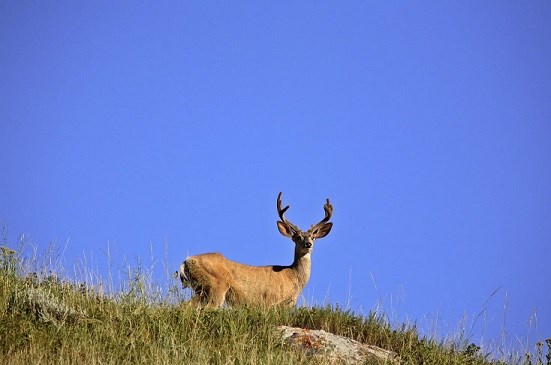REGINA - Although it is recommended to be particularly cautious during the fall and spring months, caution and attention are necessary year-round.
SGI manager of media relations Tyler McMurchy touched on several important recommendations and statistics.
Every year SGI reports $100 million in claims involving collisions with wildlife. As well as several hundred injuries each year because of these occurrences. He further stated that there are 500-600 moose collisions per year and approximately 1,000 deer collisions each month. Birds and other wildlife are responsible for numerous impacts with vehicles, too.
During spring, the deer and moose come out of the bush to escape the biting insects and to enjoy the salt that has settled in the ditches from the previous winter. Such proximity to the roadway poses a threat due to the unpredictability of these large animals. Moose tend to be fearless and often remain still even when approached by a vehicle.
In the fall, the pre-rut begins in September and can last up to two months. The rut itself refers to a period when the females go into heat and the males become competitive, seeking to breed. Generally, it lasts a further six weeks.
During these highly active times, mating is a driving force that further adds to the risk on the road. As these large animals become single-minded. Any inborn sense of caution tends to take a back seat to mating.
McMurchy continued that the prevalent times for accidents occur at dawn and dusk. He recommends that drivers remain vigilant no matter the time of any drive. McMurchy added that the best way to avoid the likelihood of these accidents is to develop the habit of scanning the road shoulder to shoulder, especially in the yellow caution sign areas and any areas of previous sightings or actual hazards.
At night motorists should look for glowing eyes and always be aware that if you see one, there are likely more to follow. He further stated that the driver should aim for the direction of the animal’s entrance onto the roadway if it is safe to do so. Never swerve into on-coming traffic to avoid the collision. This manoeuvre may mitigate the severity of the crash with a glancing blow rather than a direct impact.
He also said that letting up on the brake in the seconds prior to the crash can help to prevent the animal from going through the windshield. This action lifts the front of the vehicle at the last second.
McMurchy concluded that if the damage precludes the further operation of the vehicle, as safely as possible, pull off to the shoulder or nearest approach and turn on your hazard lights. If it is possible, illuminate the animal to alert other drivers. Call the RCMP or local authorities and wait with your vehicle for help to arrive.
Alternately, if the vehicle is still drivable, continue your travel and once in a safe and stable location, contact the authorities and SGI.



